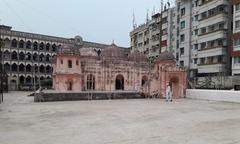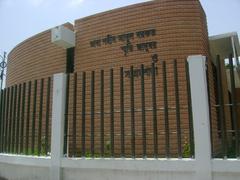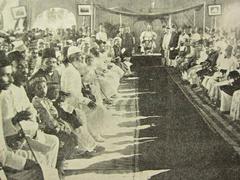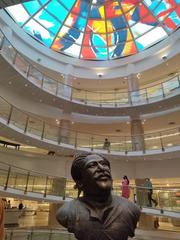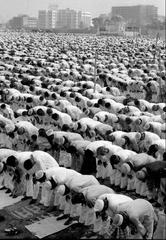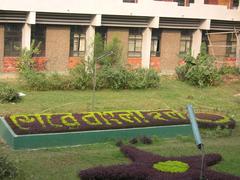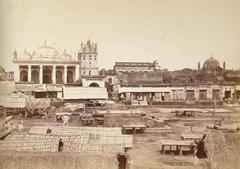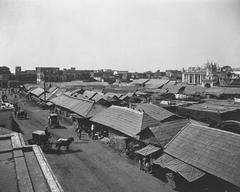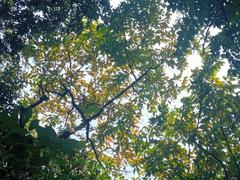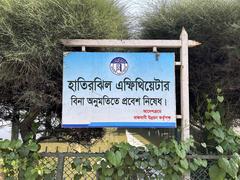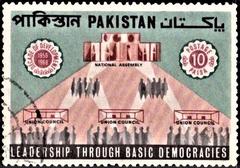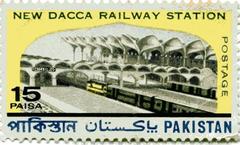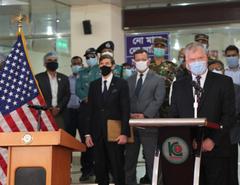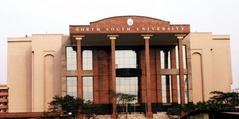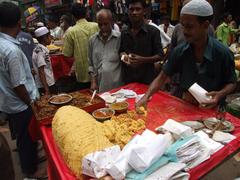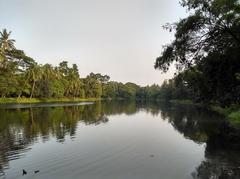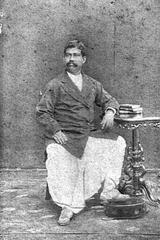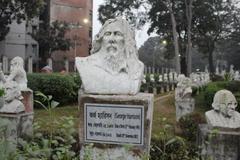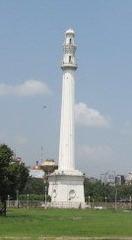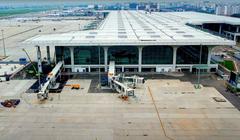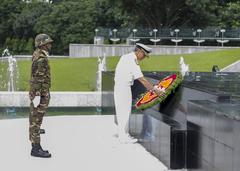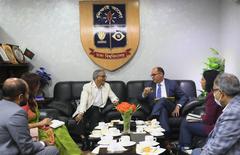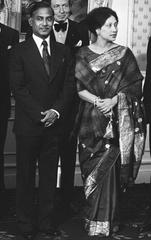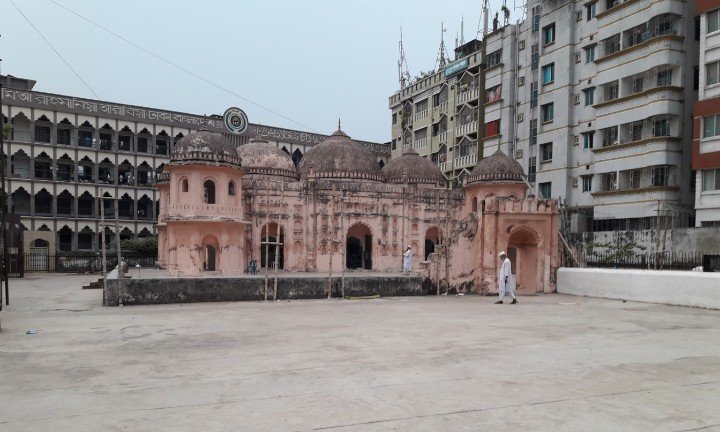
Jamia Rahmania Dhaka: Visiting Hours, Tickets, and Historical Guide
Date: 14/06/2025
Introduction
Jamia Rahmania, situated in the heart of Dhaka, Bangladesh, is celebrated for its profound contributions to Islamic scholarship, cultural heritage, and community engagement. Established in the early 20th century, this prominent madrasa has grown to become a cornerstone of religious education and a significant historical site, embodying both traditional Islamic values and modern educational practices. With its roots in the Deobandi tradition, Jamia Rahmania offers a rigorous curriculum that integrates classical Islamic sciences and contemporary studies, nurturing generations of scholars and community leaders.
Beyond academics, the institution stands out for its architectural elegance—showcasing Islamic motifs and modern design—and for its enduring role in community welfare, interfaith dialogue, and the preservation of Bangladesh’s Islamic heritage. This comprehensive guide provides detailed insights into Jamia Rahmania’s history, visitor information, cultural significance, and practical travel tips, ensuring an enriching and respectful experience for all visitors.
For the latest updates and in-depth resources, consult reliable travel and cultural guides such as ToursnTripsBD, HalalTrip, and DiscoverWalks.
Historical Background
Foundation and Early Growth
Founded in the early 1900s, Jamia Rahmania was established to address the regional need for advanced Islamic education. The institution initially operated with modest resources, focusing on the Dars-i-Nizami system—a curriculum emphasizing Quranic studies, Hadith, Fiqh (Islamic jurisprudence), Arabic grammar, and logic. Its commitment to academic rigor and piety quickly attracted students from across Bengal and beyond, laying the foundation for its reputation as a distinguished center of learning.
Evolution and Expansion
As Dhaka developed into a major urban hub, Jamia Rahmania expanded its campus, faculty, and academic resources. New departments dedicated to Hadith, Tafsir (Quranic exegesis), and Islamic law were established, and the institution invested in a substantial library. The madrasa’s graduates have played pivotal roles as imams, teachers, and community leaders, furthering Islamic education and social welfare throughout Bangladesh.
Navigating Political and Social Change
The institution’s history is intertwined with major regional events, including the partition of India and the independence of Bangladesh. Throughout these transitions, Jamia Rahmania remained a bastion for religious education and tolerance, continuing to adapt by integrating national development priorities and participating in interfaith discourse (ToursnTripsBD).
Academic Structure and Contributions
Curriculum
Jamia Rahmania offers a multi-tiered educational system encompassing:
- Hifz-ul-Quran: Quran memorization, primarily for younger students.
- Alim and Fazil Programs: Advanced studies in jurisprudence, theology, and classical Arabic.
- Specialized Departments: Including Hadith, Tafsir, and Fiqh, focusing on research and analysis.
The curriculum has evolved to include modern subjects like Bangla, English, and basic sciences, reflecting a commitment to holistic education.
Scholarly Impact
The seminary is recognized for its scholarly output—commentaries, fatwas, and research on contemporary Islamic issues. Its faculty maintain strong ties with other leading South Asian madrasas, fostering scholarly exchange and ensuring the institution’s continued relevance in global Islamic thought.
Architectural and Cultural Significance
The campus blends traditional Islamic motifs—arched entrances, domed prayer halls, and ornate classrooms—with functional modern design. The central mosque is both a spiritual and architectural focal point. Regular lectures, religious festivals, and community events underscore Jamia Rahmania’s role as a vibrant cultural and religious hub (ToursnTripsBD).
Community Engagement
Jamia Rahmania is deeply committed to social welfare, running charitable programs such as free education for underprivileged students, Ramadan food drives, and medical clinics. The institution often mediates local disputes and offers ethical guidance, reinforcing its status as a trusted community pillar.
Modern Developments
In response to contemporary challenges, Jamia Rahmania has adopted new technologies, expanded library resources, and established partnerships with universities and research centers. While balancing tradition and modernity, the institution remains dedicated to maintaining high academic and ethical standards.
Visitor Information
Visiting Hours
- Monday to Friday: 9:00 AM – 5:00 PM
- Saturday: 9:00 AM – 1:00 PM
- Sunday: Closed
Note: Hours may vary during religious holidays or special events. Confirm ahead of your visit.
Tickets and Entry
- Admission: Free. Donations are encouraged to support educational and charitable initiatives.
- Guided Tours: Available by prior arrangement. Tours provide in-depth insights into the madrasa’s history and daily life.
Accessibility
- Facilities: The campus is wheelchair accessible, with ramps and accessible restrooms.
- Transport: Easily reachable via taxi, rickshaw, or public transport. Use ride-sharing apps like Pathao or Uber for convenience (SafetyVisit).
Dress Code and Etiquette
- Dress Modestly: Long-sleeved, loose-fitting clothes. Women should cover their hair; men should avoid shorts and sleeveless tops.
- Behavior: Maintain silence in study areas, remove shoes before entering prayer halls, and respect gender segregation norms (Visit My Mosque Guide).
- Photography: Permitted in public areas with permission. Avoid photographing individuals or classrooms without explicit consent.
Food and Drink
- Prohibited: Eating and drinking inside the prayer hall.
- During Ramadan: Refrain from eating or drinking in public during daylight hours (DiscoverWalks).
Special Events and Programs
- Open Days: Feature student debates, Qur’anic recitations, and cultural exhibitions.
- Seminars/Workshops: Occasionally open to the public, focusing on Islamic scholarship and interfaith dialogue.
Nearby Attractions
Enhance your visit by exploring other Dhaka landmarks:
- Lalbagh Fort: Mughal-era fort complex.
- Ahsan Manzil: The Pink Palace, former Nawab residence.
- Baitul Mukarram Mosque: Bangladesh’s national mosque.
- Sat Masjid: Notable for its seven domes and historical importance.
Visual and Media Resources
High-quality images and virtual tours are available through official tourism sites and the institution’s website. Look for images with descriptive alt text such as “Jamia Rahmania campus entrance in Dhaka” or “Interior of Jamia Rahmania mosque” for accessibility.
Frequently Asked Questions (FAQ)
Q: What are the visiting hours?
A: Monday–Friday 9:00 AM–5:00 PM, Saturday 9:00 AM–1:00 PM. Closed on Sundays. Confirm ahead for holiday schedules.
Q: Is there an entry fee?
A: No, admission is free. Donations are welcome.
Q: Are guided tours available?
A: Yes, by prior arrangement through the administration.
Q: Is Jamia Rahmania wheelchair accessible?
A: Yes, the campus is accessible with ramps and restrooms.
Q: Can non-Muslims visit?
A: Yes, non-Muslims are welcome outside prayer times, provided they follow etiquette.
Q: Can I take photographs?
A: In designated areas with permission. Avoid photographing people without consent.
Safety and Travel Tips
- Stay Alert: Avoid carrying valuables and be vigilant in crowded areas (SafetyVisit).
- Health: Drink only bottled water. Carry sanitizer and tissues.
- Transport: Plan routes in advance; traffic can be unpredictable.
- Women Travelers: Dress modestly and avoid traveling alone at night.
Related Dhaka Historical Sites
Jamia Rahmania is part of a broader network of Islamic landmarks in Dhaka, including:
- Baitul Mukarram National Mosque
- Binat Bibi Mosque
- Sath Gambuj Mosque
- Star Mosque (Tara Masjid)
- Hussaini Dalan
These sites, together with Jamia Rahmania, offer a comprehensive exploration of Dhaka’s Islamic heritage.
Conclusion and Call to Action
Jamia Rahmania stands as a living testament to Bangladesh’s religious, educational, and cultural legacy. Its blend of historical depth, architectural beauty, and community engagement make it an indispensable stop for visitors to Dhaka. By following the guidelines outlined here—regarding dress, etiquette, and visiting schedules—you can ensure a respectful, insightful, and memorable visit.
For up-to-date visitor information, virtual tours, and special event schedules, use official tourism platforms or download the Audiala app. Continue your exploration of Bangladesh’s rich history by visiting related landmarks and engaging with local culture.
References
- Jamia Rahmania Visiting Hours and Historical Guide to Dhaka’s Islamic Educational Landmark, 2025, ToursnTripsBD
- Visiting Jamia Rahmania: History, Significance, and Visitor Information in Dhaka, 2025, HalalTrip
- Jamia Rahmania Visiting Hours, Tickets & Visitor Guide to Dhaka’s Historic Islamic Seminary, 2025, DiscoverWalks
- SafetyVisit
- Visit My Mosque Guide
- Official Jamia Rahmania Website
